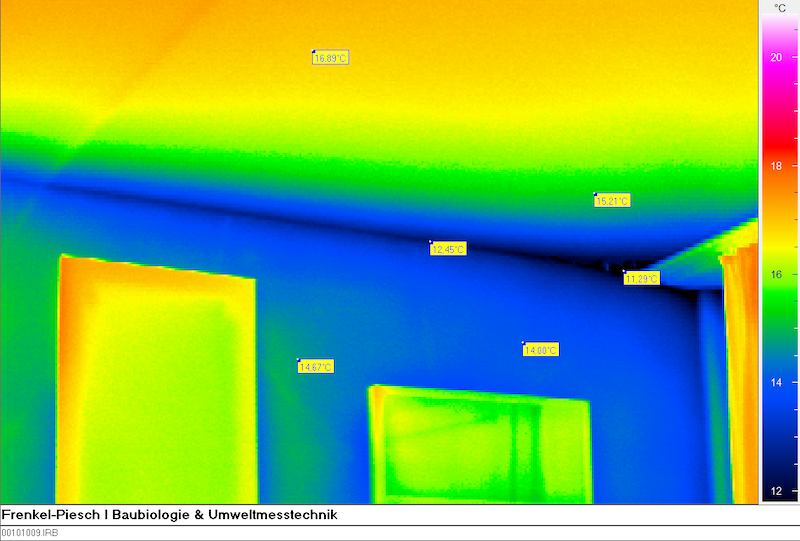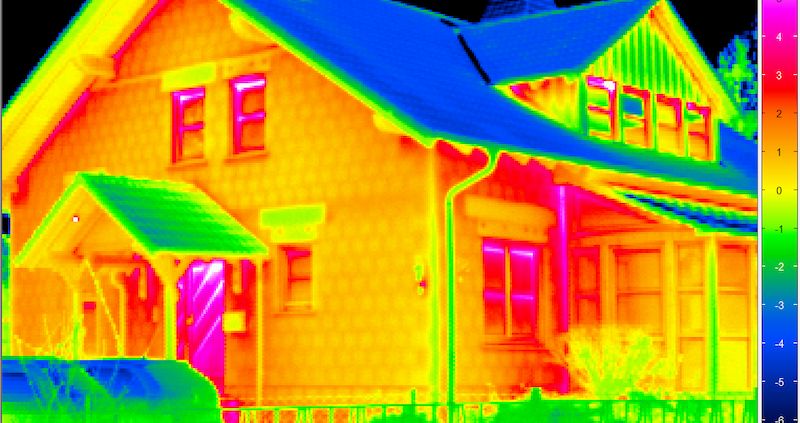Infrared thermal imaging in building biology
Thermography is an imaging method that makes temperature distributions visible. With the help of an infrared thermal imaging camera, the temperature differences on the surface of a building component, such as a wall surface, become visible by means of colour gradients. Thermal bridges or weak points in the building envelope can thus be made visible.
In addition to the energetic analysis of heat losses of a building, thermography also offers valuable support for the building biology investigation of mould infestation in interior rooms. In addition to moisture analyses of parts of the building, infrared thermal imaging can be used to visually depict an area where there is an acute risk of mould growth.
In summary, building thermography offers valuable support:
– For the identification of energetic leaks in the building envelope.
– For quality assurance or leakage detection of airtightness tests of a building project
– Building biology investigations to assess the risk of mould formation
The use of scanner technology for infrared images provides high-quality and informative thermal images.
Example: Entrance area of residential building – risk of mould formation due to thermal bridges
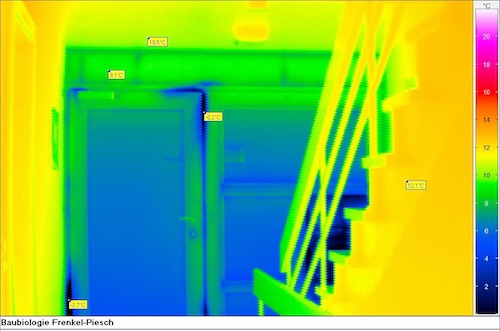
Example: Window reveals in residential buildings – risk of mould growth due to thermal bridges
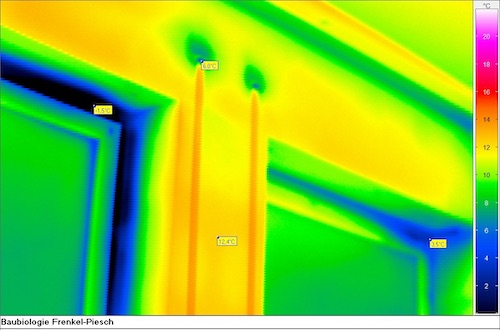
Example: Facade of residential building: Analysis of heat losses
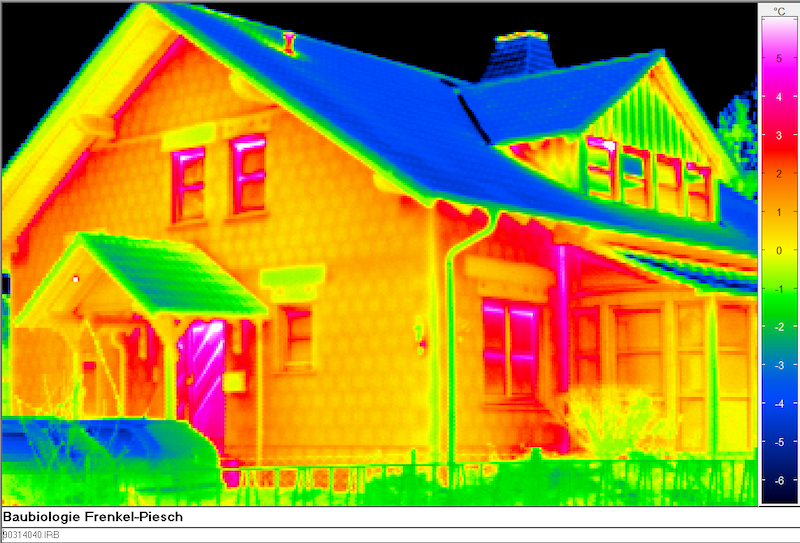
Example of a thermal bridge in the floor area:
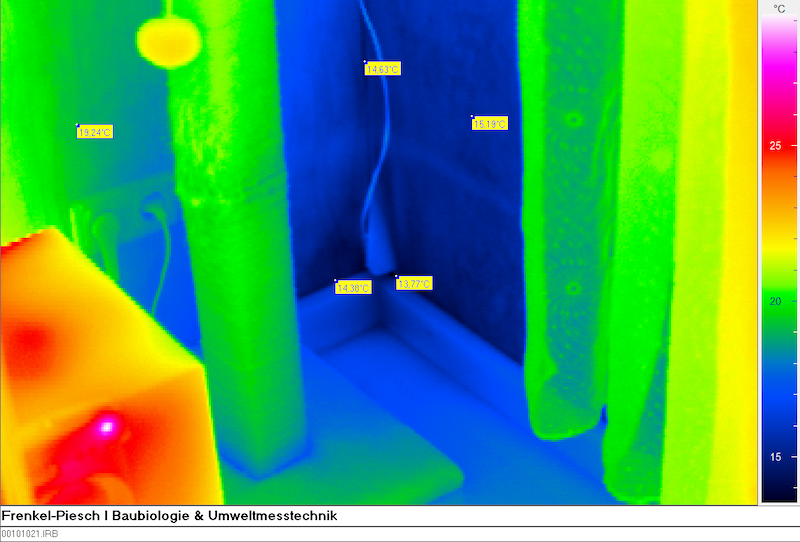
Example of a thermal bridge in the area of the floor ceiling:
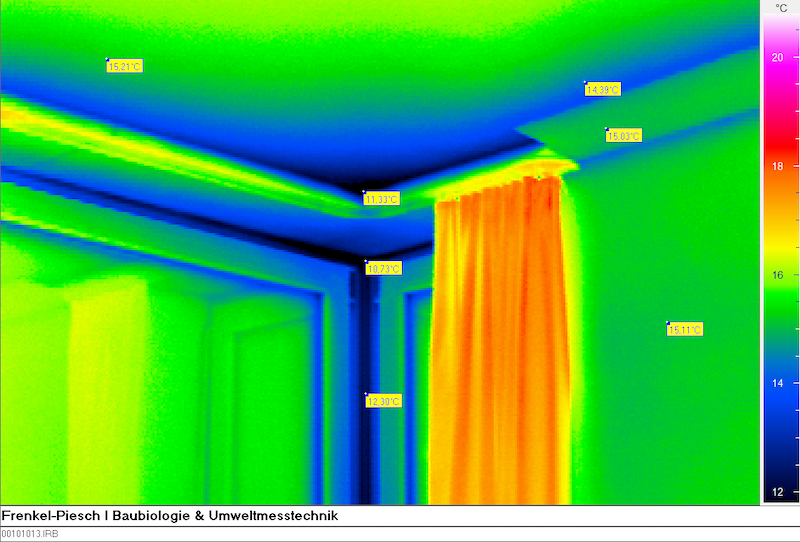
Example of a thermal bridge in the area of the floor ceiling:
